
Virginia Pine Trees
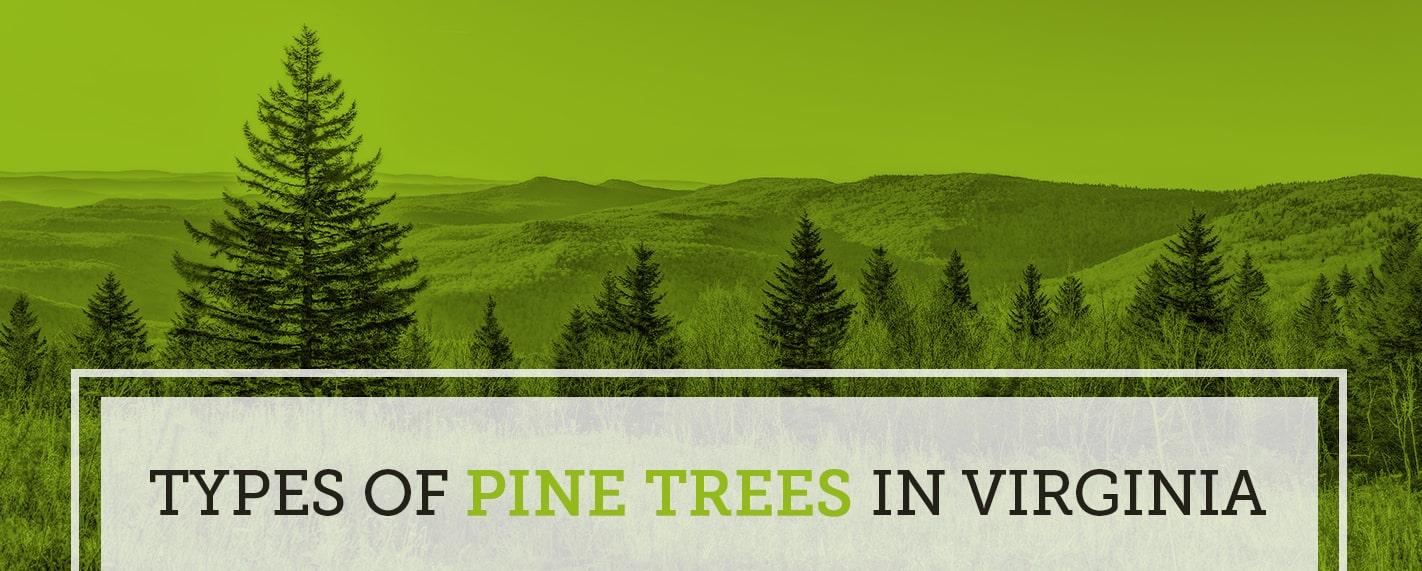
Jump to:
- Eastern White Pine Trees
- Pitch Pine Trees
- Red Pine Trees
- Shortleaf Pine Trees
- Table-Mountain Pine Trees
- Virginia Pine Trees
- Longleaf Pine
- Loblolly Pine
There’s something special about pine trees. With their towering heights and massive spread, they have an air about them that’s both majestic and powerful. Aside from the sheer beauty they offer, they’re also great elements to add to your yard as they retain their needles all year round and can add some much-needed color and dimension to your space during the cold months.
What many people may not realize, however, is that the term “pine tree” is an incredibly broad classification that covers dozens of sub-species of evergreen trees. A pine tree isn’t just a pine tree. It’s an Eastern White Pine Tree or perhaps a Loblolly Pine Tree. There is a wide range of different kinds of pine trees native to Virginia alone, to say nothing of the entire country.
Are you looking to purchase one of these beautiful trees for planting in your yard? If so, it can be difficult to know where to begin. That’s why we’ve put together this guide to Virginia pine trees. We’ll talk about different pine tree species and what to expect from each one, as well as more information about what pests might enjoy snacking on your newly planted trees and how to tell if your tree is getting sick. Let’s get started.
What Kind of Pine Trees Grow in Virginia?
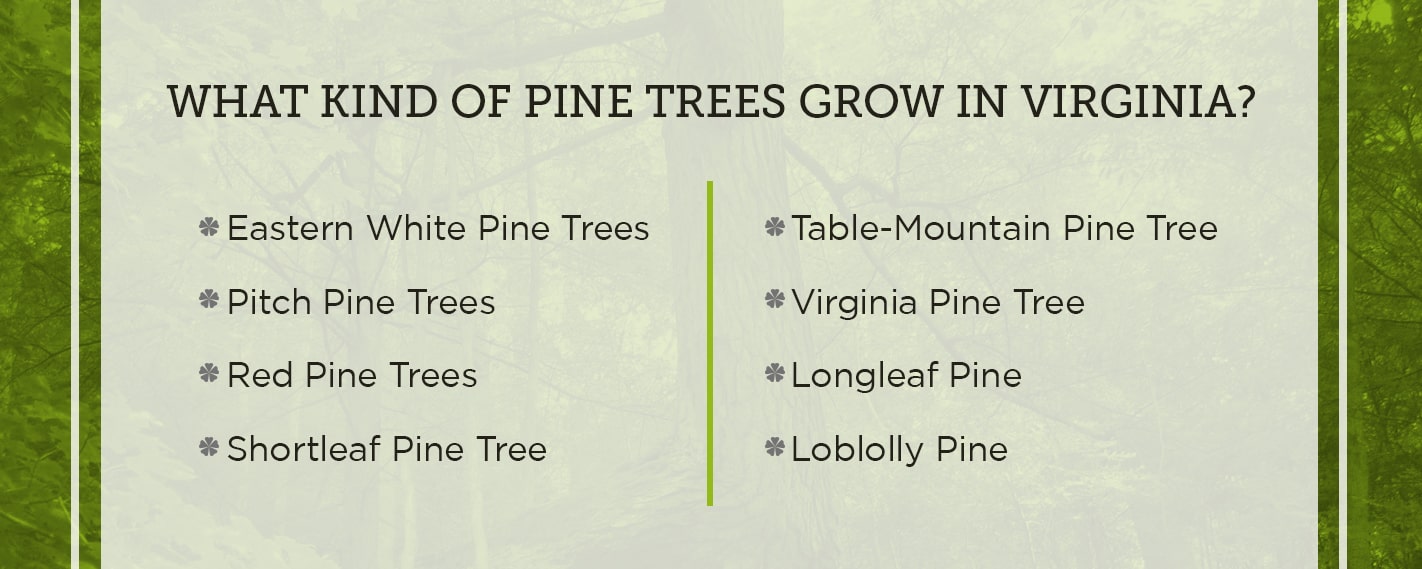
Virginia is home to a variety of pine tree species, some incredibly similar and others that have a look all their own. As you begin shopping for trees native to your area, here are some of the pine tree types you’re likely to come across.
1. Eastern White Pine Trees
There’s a lot to love about the Eastern White Pine Tree. It’s especially prominent in northern Virginia and western Virginia, although it can also be found across the entire Northeast. This gorgeous tree has the distinction of being the tallest conifer tree species native to the Northeast, reaching towering heights of anywhere from 75 to 150 feet. While this might not fit in a small suburban yard, it makes a great choice for landscaping if you’ve got the space for it.
Eastern White Pines also boast longevity, with some trees living as long as 450 years. To put this number in perspective, a 450-year-old tree today would have been planted a full 50 years before the pilgrims landed in Massachusetts. It doesn’t take them hundreds of years to reach an impressive height either, although they will certainly keep growing for their entire lives. These trees are fast growers, easily reaching 40 feet in as few as 20 years. Finally, this tree is easy to pick out of a crowd both because of its tall height and its striking silver-green needle color.
2. Pitch Pine Trees
Pitch Pine Trees aren’t hard to spot, even for someone with little knowledge of trees. This is because of the way their needles grow in distinctive clumps of three. These needles are very sharp-tipped and may grow perfectly straight, or they may be twisted. Additionally, these trees can be identified by their yellow-green needle color
While not as tall as some of their cousins, Pitch Pine Trees still reach very respectable heights of anywhere from 50 to 80 feet and will grow roughly one foot every year of their life. These trees are common across the entire eastern United States and in Virginia, they can be found particularly across the western half of the state.
3. Red Pine Trees
If you guessed that a red pine would be easy to identify because of its red coloring, then you guessed right. Their branches and twigs have a brownish-yellow color when the tree is young, but this will quickly deepen to reddish-brown as the tree matures. The needles of these trees are dark green, presenting a striking contrast with the red branches, and are extremely stiff and unbendable.
This tree is common throughout both Virginia and the eastern United States, stretching even up into eastern Canadian provinces. In most settings, the Red Pine will reach heights of 75 to 80 feet, although ideal circumstances can produce trees of up to 200 feet.
4. Shortleaf Pine Tree
The Shortleaf Pine isn’t quite the tallest pine in Virginia, as that crown goes to the Eastern White Pine. The Shortleaf is a close second, however, reaching an expected height of at least 100 feet. This combines with a deep and complex root structure that helps them withstand even the strongest blasts of wind. The shortleaf pine is also native to a much larger swath of the country than many of the other species we’ve looked at and can be found as far south as Florida and as far west as Kansas and even Texas. Primarily, however, it grows in the east.
Shortleaf Pine trees are easy to spot because of their irregular shape. Unlike many other pines and firs, which grow consistent branches and needles all the way up the trunk, the Shortleaf is irregular. Its trunk can grow tall and straight or curved and is often devoid of any branches until quite high into the air. The needles are also exceptionally long and grow in large, spiky clumps.
5. Table-Mountain Pine Tree
The Table-Mountain Pine grows abundantly throughout the Appalachian Mountains and can be found throughout Northern and Western Virginia. It is also commonly referred to as the Hickory Pine, or perhaps a Mountain Pine. It grows best in these mountain climates, and may not do as well when planted at lower elevations.
The Table-Mountain Pine has a unique appearance thanks mostly to its crooked trunk and spreading branches. This pine is also a comparatively small species, with average heights of about 50 feet.
6. Virginia Pine Tree
It should come as no surprise that the Virginia Pine can be found throughout the state of Virginia, as well as throughout the entire Appalachian region as far north as New York state and as far south as Alabama. It is also smaller than many other pines. In ideal conditions, it can grow as tall as 70 feet, but it's more commonly found in ragged and shrubby sites where it reaches no higher than 25 feet.
One of the major draws of the Virginia Pine is that it grows in healthy soil as well as in drought conditions that might easily kill a more fragile species. It grows quickly and can easily live up to 150 years even if there are drought years sprinkled into the mix. It’s also notable for its distinct crooked trunk and will require pruning to achieve a traditional conical shape such as what might be expected from a Christmas tree.
7. Longleaf Pine
The Longleaf Pine is not going to be found scattered across the state, like many of the species we’ve looked at. This is a pine tree type native to the southern United States, and as such, can be found in small pockets along the southern border of Virginia. Longleaf pines can live to staggering ages of over 300 years.
These pines are also rapid growers. These trees can easily reach 40 feet in a mere 20 years and can reach a maximum height of 75 to 120 feet. The Longleaf Pine’s name is inspired by its bright green and flexible needles which grow together in bunches at the end of branches. Aside from its needles, this tree is also recognizable for its long, bare trunk, with the lowest branches only starting to sprout high in the air.
8. Loblolly Pine
Another of the pine trees native to the American south, Loblolly Pines can be found from Texas to the Atlantic Ocean and Florida to Maryland. In Virginia, they tend to be concentrated in the eastern half of the state, as they aren’t built for mountain climates.
Young Loblolly pines will have exceptionally dark, almost black bark, while mature trees will mellow out into a reddish color. Needles are yellow-green, grow in clumps of three and can be as long as 9 inches. These trees are fast growers and have been known to reach 50 feet in 20 years, as well as eventual heights of 100 feet. Trunk diameters are also larger and can be 2 to 3 feet. These trunks will be tall, straight and devoid of branches until quite high off the ground.
Which Pine Trees Are Edible?
The savvy tree-owner may be curious to know which of the native pine trees in Virginia are edible. While not many of us will ever be in a situation where we will need to begin consuming pine nuts and bark to survive, there are other reasons to know this information. If you have young children, for instance, you may not wish to plant a tree with poisonous bark, since your child may easily decide it might be fun to try eating it. In situations like this, it’s always better to be safe than sorry.
All of the pines included in our list are edible in different capacities. Some are even used to make herbal teas and remedies, while others can be chewed raw once the bark has been stripped away. Across the board, the edible parts of most pine trees include:
- Pine nuts and seeds
- Pine pollen
- Pine needles can be brewed into tea
- Pine bark — the outer bark is usually inedible, but the soft inner bark is safe for eating
Which Pine Trees Are Poisonous?
The vast majority of pine trees are quite edible, as we previously mentioned. Each of these major Virginia pine tree species can be safely consumed without any worry.
However, not every pine tree is quite so friendly. Norfolk Island Pines and Yew Pines are two examples of poisonous pine species. Neither of these is common in Virginia, but it’s still not a bad idea to understand how dangerous they can be when consumed.
It’s also noteworthy that some trees are only poisonous to some people. Ponderosa Pines, for instance, have been cited as being harmful to pregnant women and can cause issues with the pregnancy. Other people have no problems consuming parts of this tree.
Which Animals Eat Pine Trees?
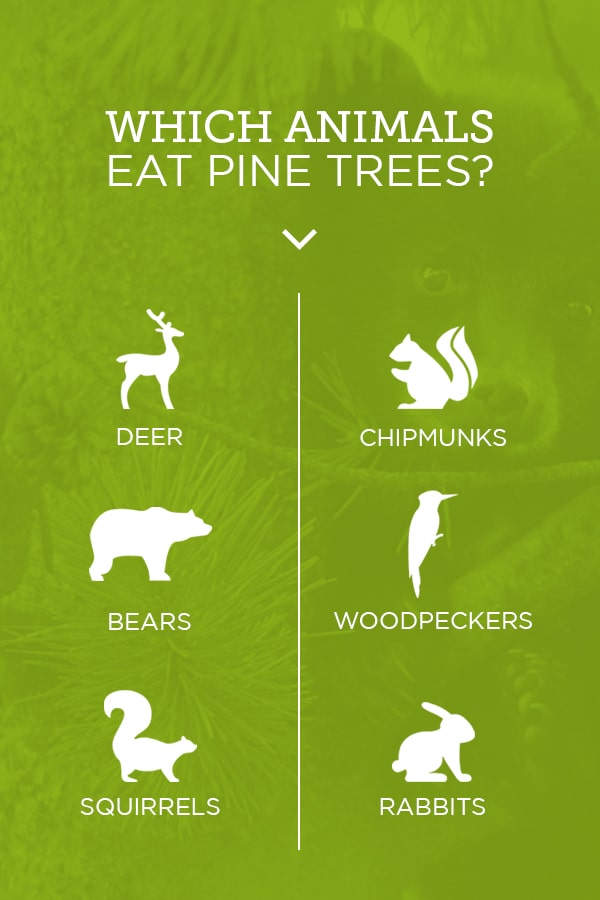
When you plant a pine tree in your yard, it won’t grow into a towering giant overnight. It’ll start small, and it’ll need a lot of care if it’s going to live for hundreds of years or grow to become a useful shade tree. You may need to water it, spray it with pest control and prune it. One other concern that you may need to worry about is the local wildlife.
Plenty of creatures love nothing more than snacking on young pine trees. And while it’s true that animals need to eat too, their eating can easily kill a pine tree before it’s even had time to grow.
If you’re thinking of planting a pine tree in your yard, here are the animals you’ll want to watch out for:
- Deer: During the winter months when there isn’t much food around, deer will eat the bark right off a pine tree.
- Bears: If food is scarce, bears aren’t above peeling the bark off trees to eat. In some cases, they can even go so far as to strip entire trees completely bare.
- Squirrels: Squirrels won’t eat the needles or bark themselves. They do enjoy the pine nuts, however, and will snatch these up and run off with them. This isn’t always harmful, however, as they may bury these seeds that then lead to new trees growing.
- Chipmunks: Much like squirrels, chipmunks love pine nuts and will often steal them to both eat and bury.
- Woodpeckers: Many pine trees have a softer wood than deciduous trees, making them a prime target for woodpeckers. While the woodpeckers aren’t eating the wood, their hunt for bugs can still damage a young tree if it’s being pecked excessively.
- Rabbits: Rabbits aren’t likely to eat the bark unless the tree is still extremely young. Instead, they’re much more likely to go after seeds and nuts that have already fallen to the ground.
How Do You Know If a Pine Tree Is Dying?
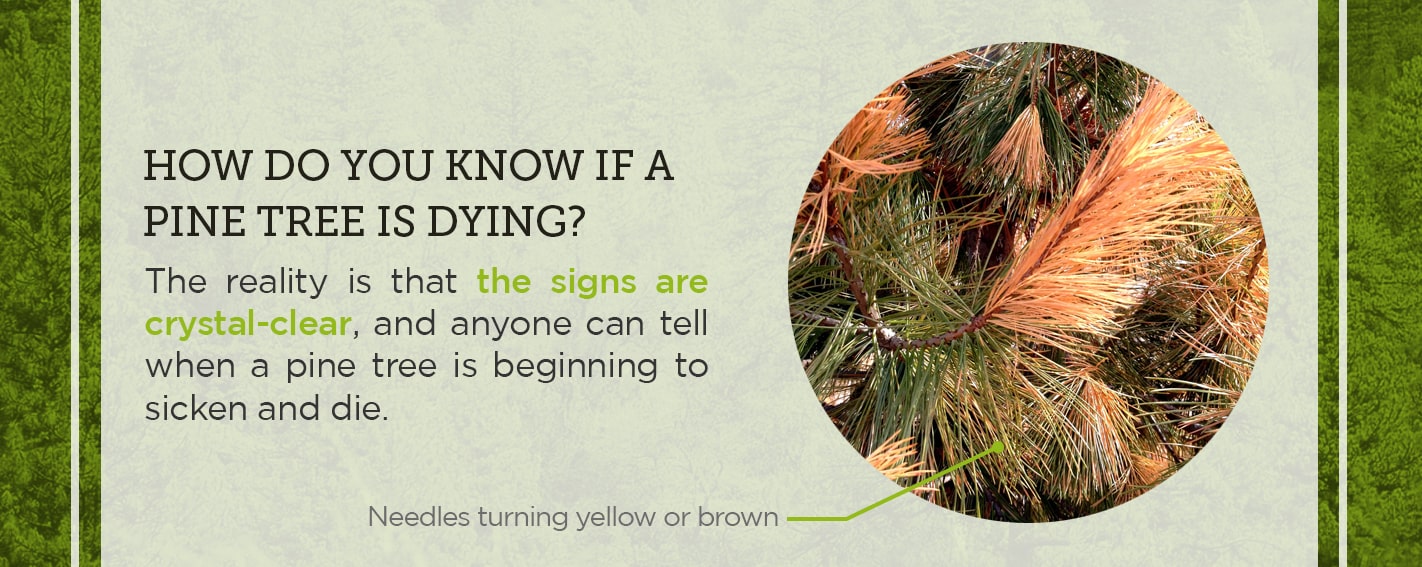
You might think that it takes a pine tree expert to identify the signs of a tree that’s dying, perhaps as the result of too many animals chewing on it. The reality is that the signs are crystal-clear, and anyone can tell when a pine tree is beginning to sicken and die. A few of the telltale signs to look for include:
- Needles turning yellow or brown
- Needles dropping and falling off
- Lack of new growth
- Bark falling or peeling off in large quantities
The odds are that if you look at a pine tree and your immediate reaction is that the tree looks sick, it probably is. Exercise some caution when it comes to diagnosing tree illness, however, since some needles naturally have a yellow tint, and some simply grow slower than others.
Contact Richard’s Tree Service for More Information About Your New Pine
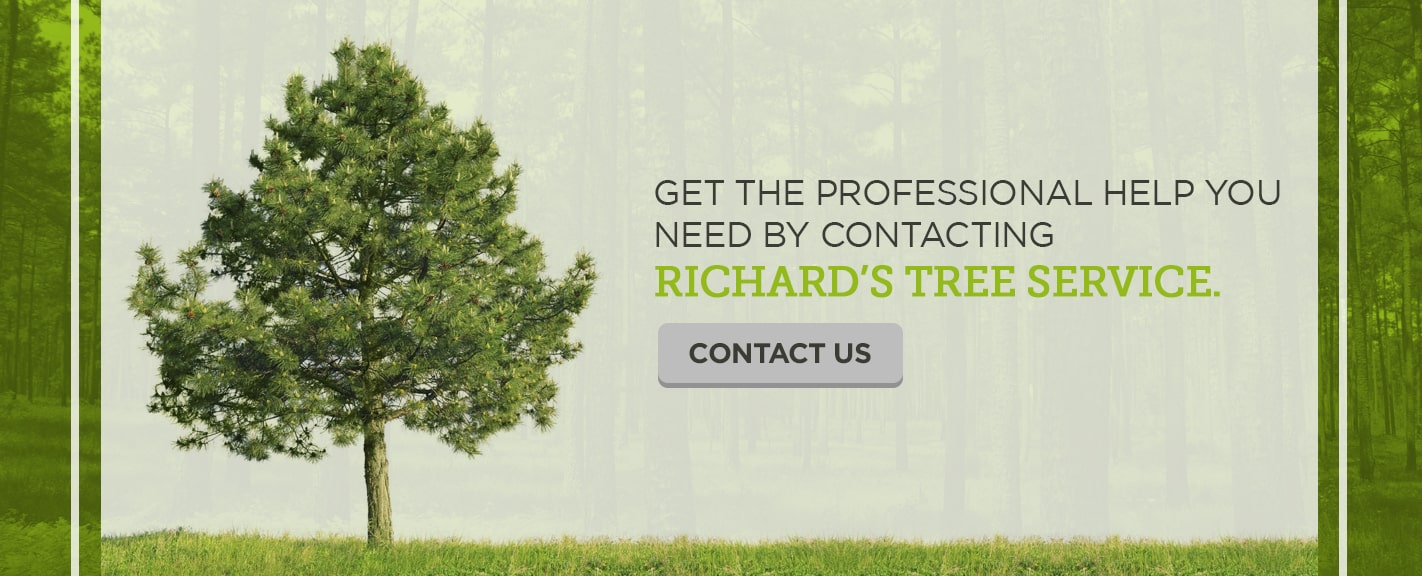
Looking to add a pine to your yard, but afraid you might be in a little over your head? Get the professional help you need by contacting Richard’s Tree Service. Based in Annandale, Virginia, we offer a wide range of tree services from pruning, removal and evaluation, and we can also help diagnose tree diseases and provide tips on pest control.
For more information about how we can help you succeed with your new pine tree, contact us today.
If it is an emergency please call us immediately at 703-354-3667.
Use this form to schedule a FREE estimate. After submitting your form, our team will contact you to set up this appointment.
